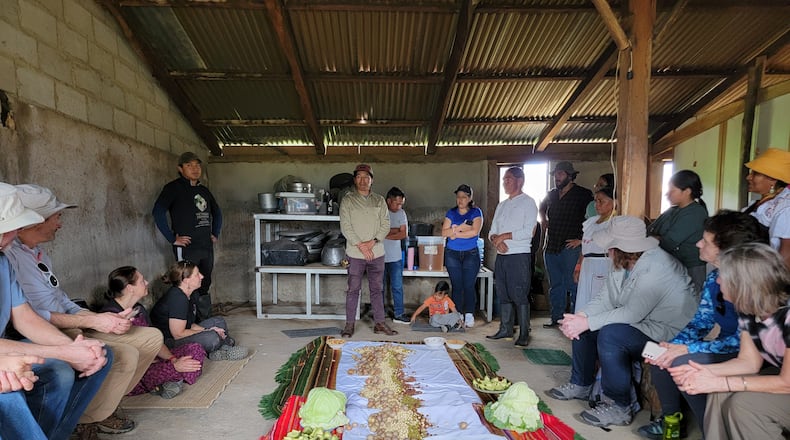We are once again working in the Tangali (I spelled it wrong last week) school, helping to plant vegetables for the students and their families. We have cleared land and prepared the beds; last week we planted vegetables such as peas, fava beans, cabbage, beets, carrots, and more.
We planted peppers for ahi (an incredible hot sauce that goes on everything) but no tomatoes. It doesn’t get warm enough here for tomatoes to grow at this level. The temperature is between 55 and 75F almost year-round.
This is the rainy season, so we have had many clouds, but little rain. In the courtyard of the hotel, it was raining on the left side and sunny on the right. The temperature can change in as much as one minute if clouds come or go.
The communities assisted by the Tandana Foundation determine projects in which they would like to have assistance. They connect with the foundation which can provide help (such as the MGVs) or financial assistance.
However, the community also must put in sweat equity. We are not here to do the work for them but rather beside them. Parents of the school are required to assist us each day. This is called a minga or community workday.
They are always happy to have help and the highest form of payment is that they feed us. Food is very important in this culture and last Friday, after completing the first week, we had a pambamesa and they presented Anna Taft, Tandana Foundation director, with a large bowl of potatoes, other vegetables, and a guinea pig.
Guinea pig or cuy is only provided for celebrations and holidays. It is a specialty in this country. Most of our volunteers try it at least once. And yes, it sort of tastes like chicken! This bowl of food was to thank the foundation for the help all week.
The pambamesa is a meal in which all participate by bringing something to the table. We brought a couple of chickens. The ladies then spread sheets on the table and spread all the food out to be consumed.
We eat out of a large cabbage leaf or a large leaf of kale. We scoop the food with our hands and eat alongside the community members.
If you want to learn more about the potential opportunities for these volunteer vacations, go to http://tandanafoundation.org.
Pamela Corle-Bennett is the state master gardener volunteer coordinator and horticulture educator for Ohio State University Extension. Contact her by email at bennett.27@osu.edu.
Credit: Contributed
Credit: Contributed
About the Author


